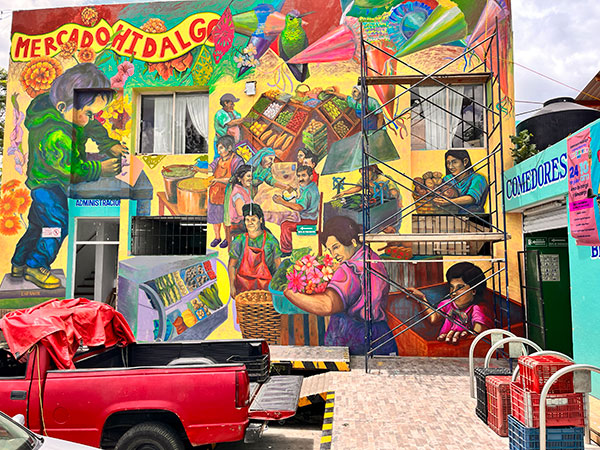 |
| My daughter Sarah during a visit |
 |
| Mural being created by the group Subterreneos for a local food market |
 |
| Artist working on mural |
"Every man's life is a fairy tale written by God's fingers." Hans Christian Andersen
 |
| My daughter Sarah during a visit |
 |
| Mural being created by the group Subterreneos for a local food market |
 |
| Artist working on mural |
In the heart of the tapestry that is Oaxaca, Mexico, a treasure trove of villages unfurl, each with its own distinct artistry woven into the fabric of tradition. For instance one village is famous for woodworking, another for textiles and yet another for clay work. Like living time capsules, they specialize in crafts that span generations, weaving threads of culture and craftsmanship into art.
Last Friday morning, a journey of cultural exploration awaited, intertwining the lives of Amy and me with the essence of our adopted homeland.
The sun cast its golden glow upon the rugged landscape and abundant corn fields as we set out from our home in the village of San Pedro Ixtlahuaca, guided by our gracious Mexican neighbors, Mayolo and Marta. Our destination was San Bartolo de Coyotepec, a place renowned far and wide for its special black pottery.
 |
| Mayolo, in front of a mural at San Bartolo de Coyotepec |
 |
| Vase that captured Amy's heart. |
I liked it as soon as I saw it. Amy was already smitten. We were in a gallery called Peyote People that represents art special to Huichol Indian people of southern Mexico. It is across the street from Boulenc, a bakery and restaurant we visit frequently to buy the best baked bread in Oaxaca. We had bought bread and decided to drop in to the gallery on our return to our car. Beaded art, yarn paintings, textiles, ceramics and wood carvings adorned the area from top to bottom. Amy had stopped in her tracks in front of a yarn painting hanging high on a wall. I came to her side and we admired it together. Huichol yarn paintings are made with colorful yarn meticulously glued to board and depict symbols important to the culture. Amy was especially touched by the motif of corn, feathers, a deer, the sun, and peyote plants, skillfully laid out in yarn of fantastic colors. We bought the piece.